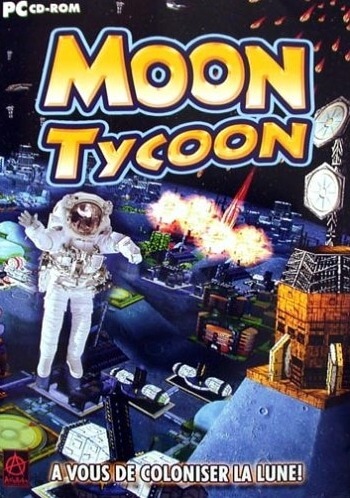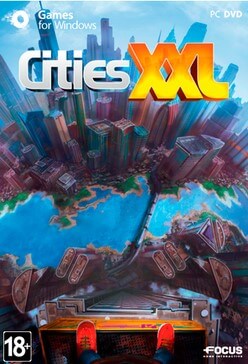Neighbor cities play a larger role than in the previous versions of the game. For example, neighbor deals can be established, where a city can exchange resources such as water, electricity and garbage disposal with other cities for money. Players may develop several inter-dependent cities at the same time, eventually populating the entire region.
Game modes
Upon selecting a specific segment in a region, gameplay is divided into three "modes": god mode, mayor mode, and MySim mode. Mayor and MySim modes become available after establishing a city. The god mode is available before establishing a city, as well as after, but with fewer functions. The unavailable functions can be re-activated by obliterating the city.
God mode
The first mode is god mode, which allows players to design or terraform a selected tract of land where the city will be built. God mode also allows players to trigger disasters, including tornadoes and earthquakes among several others. Players can select an area where a disaster will occur and even control the direction of certain disasters. Most terraforming tools are disabled after the city is named and founded. The player still has some terraforming tools made available in mayor mode, although they become very limited and expensive, and they can still trigger disasters at will.
In addition to these abilities, god mode also gives the player tools to reconcile the borders of the cities, so as to fix any discrepancies created during the terraforming process, and a day/night cycle adjustment, so that one can make it always day, always night, or alternate between day or night in accordance with the in-universe game clock. Both the ability to reconcile the city edges and the ability to modify the day/night cycle are available even once the city has been established.
Mayor mode
The second of the modes is the mayor mode, where the actual city building is conducted. Several advisors may give advice to the player on how to best manage a city. Players can build transportation networks, which include roads, streets, avenues, highways, railways, subway lines, and bus stations. Players can also terraform and plant trees in this mode, but in a much smaller scale than in god mode. Terraforming in this mode costs money. Zones are conducted building plots that are empty at first but then controlled buildings pop up in these spaces depending on the density of the zone type.
Areas of land in this mode can be zoned as residential, commercial or industrial areas in various densities where the city will begin to grow. Agriculture is now a separate industrial zone-type, unlike previous versions of SimCity, enabling farms to grow regardless of high land value, so long as demand exists for agriculture and agricultural zones have been provided. Zones are now automatically aligned towards roads and most buildings must be adjacent to a road in order to function properly; streets are automatically created when zoning on large tracts of land.
Buildings are now classified into several wealth levels, zone types, and building size stages, which are affected by the region's population and the city's condition. The game simulates urban decay and gentrification with buildings deteriorating and refurbished accordingly. Buildings originally constructed for occupation by higher wealth tenants can now support lower wealth tenants in the event surrounding factors forces the current tenants to vacate the building; this allows certain buildings to remain in use despite lacking its initial occupants. Buildings and lots can now be constructed on slopes.
Other activities that players can do in mayor mode include building civic buildings that need constant funding to work properly, such as schools, hospitals, parks, police stations, jails, and fire stations. These buildings now come in two or more sizes compared to the single, universal types that were used in previous games. Settlements also need public utilities such as electricity with more or less polluting and more or less expensive types of power stations, water pumps, water purification plants, and waste management services. Facilities that had previously provided citywide coverage, such as educational facilities and medical facilities, have now been modified to provide a more limited coverage, as it has been with police stations and fire stations in previous SimCity titles.
Funding can now be adjusted for individual buildings rather than having to change the funding to all buildings, allowing users to specify how much money should be spent to supply a service in accordance to the local population. Maintenance expenses for public utility facilities will increase as they age. The maximum output of facilities also decreases as they get older. The rate at which facilities age is dependent on the percentage of its capacity being used and the level of funding being given to it.
MySim mode
The final mode is the MySim mode which enables players to create user-defined Sims, which will live and work in the city the player has created. When moving a Sim into a city, the player can choose from a selection of characters or import others from The Sims. Sims can be killed by certain disasters or catastrophic events, leave the city if conditions are unfavorable, or die of old age. After they die, their "child" sometimes takes over for them by taking their name, house, and job.
Building designs
Buildings in SimCity 4 borrow heavily from early 20th century architectural styles, particularly Art Deco and Romanesque Revival, while houses can appear in a traditional American Craftsman style. However, there is an additional, more modern, architectural style similar to Houston's architectural style, and a European style that is based on the skyline of Frankfurt, Germany. The construction of new buildings on zoned areas is now animated. There are a number of buildings based on those found in San Francisco, including the Shell Building (appearing as "Wren Insurance"), 450 Sutter Street (appearing as "Vu Financial"), and the Pacific Telephone & Telegraph Building also known as 140 New Montgomery Street (as "The Galvin Corp"). The May Company store in Los Angeles, now LACMA West, also appears as "Dennis Department Store." The game also includes famous landmarks from various cities, such as the Empire State Building from New York City.

















